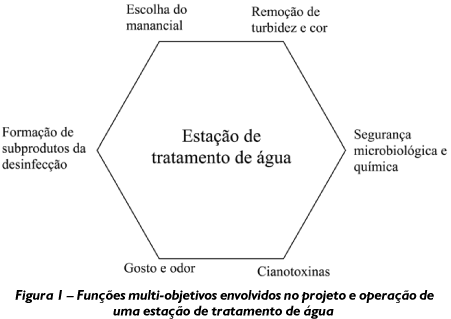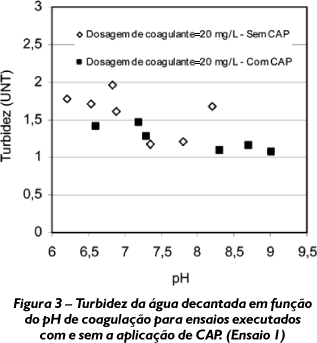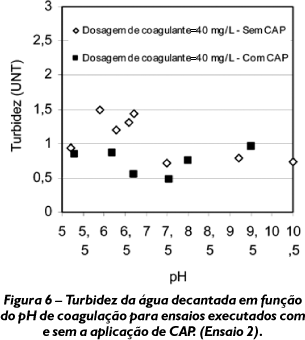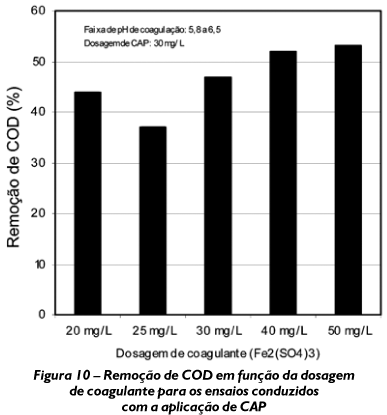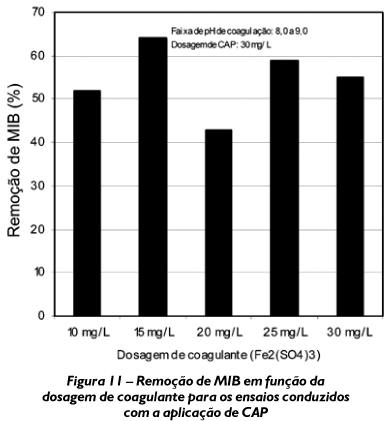Traditionally, the design of conventional water treatment plants (WTP's) has considered turbidity and color removal as well as the production of microbiologically safe water as primary goals regarding treatment optimization. In face of new technical challenges, the water quality objectives that must be achieved are far reaching. The purpose of this paper was to study the optimization of Rio Grande WTP in order to define the optimum operating conditions with respect to coagulation which maximize turbidity, natural organic matter (NOM) and taste and odor removal. The experimental results indicated that the coagulation pH in the range 5.8 to 6.5 led to both turbidity removal and NOM removal optimization. In addition to that and regardless of the pH range, taste and odor removal by adsorption was satisfactory. Therefore, the optimization of Rio Grande WTP is technically feasible.
Water treatment; adsorption; color and turbidity removal; activated carbon; taste and odor

